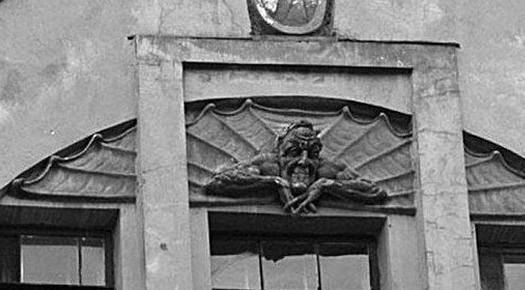
Amidst fears of increasing religious intolerance under Russian president Vladimir Putin, over 1,000 nationals decided to stage a protest in Saint Petersburg last month after the historic sculpture of a mythical demon was desecrated by religious fanatics.
“Hands off from art,” said one placard while another read, “What happened is awful.”
Reportedly, the century-old sculpture of Mephistopheles was ripped off the portico of a 19th-century building in Saint Petersburg. An indistinct group, identifying itself as Cossacks of Saint Petersburg, claimed responsibility for the desecration. The act of vandalism, which was seemingly triggered by anti-religious sentiments, went on to cause a huge outcry in the erstwhile imperial capital city and local police officials were compelled to launch a probe into the incident. Investigators reported about retrieving smashed portions of the sculpture from trash bags that had been disposed of while prosecutors said that they would ensure the vandals are tried on grounds of destroying cultural heritage, which carries a sentence of up to two years.
The now-desecrated sculpture of Mephistopheles, depicting a bat-winged creature that commonly features in German folklore, dated back to approximately 1910. According to some experts of culture, this bas-relief was meant to pay homage to the celebrated Russian opera singer Feodor Chaliapin, who shot to fame after his appearance in the opera titled ‘Mephistopheles’.
On the day of the protest, over a thousand people, including architecture preservationists, met in front of the building to express their shock over the brazen act of vandalism.
35-year-old Anna Astakhova, said, “If it’s true that the bas relief was destroyed for religious reasons then we are descending into the Middle Ages. This is inadmissible.”
“I am an Orthodox Christian myself but I do not support this absurdity… Art cannot offend anyone,” said 60-year-old Galina Vanina.
In an open letter, the group identifying as Cossacks of Saint Petersburg said the sculpture was encouraging people to worship Satan and they would not tolerate that as it opposes the teachings of the Russian Orthodox Church. However, officially recognized Cossack groups operating in the city denied having any knowledge of the incident or the group claiming responsibility for it.
The Cossacks, who were once responsible for protecting the borders of the Russian Empire, now merely campaign around the region to advocate orthodox values.
A spokesperson of the Russian Orthodox Church called the attack an understandable reaction.
“Mephistopheles embodies evil in this world and this person decided to act, most likely, to kill Evil,” said Roman Bagdasarov.
A few days before this particular act of vandalism was carried out in Saint Petersburg, fundamentalist Orthodox activists attacked a series of exhibits at a show of sculptures in the capital city of Moscow. They said that those exhibits too offended believers.
Photo Credits: The Moscow Times
